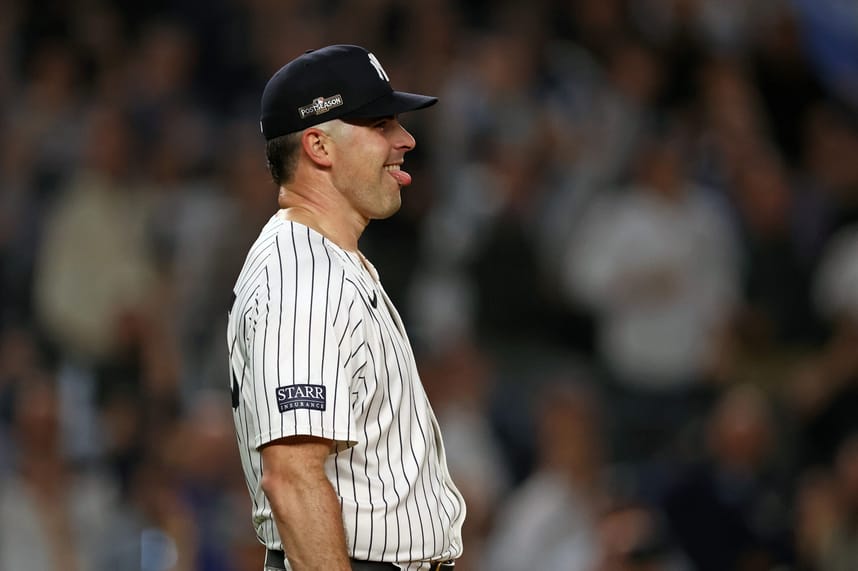
When the Yankees signed Carlos Rodon to a six-year, $162 million deal, they envisioned him as a key component of their playoff rotation. However, his first two seasons in New York have been less than ideal. His debut year was marred by injuries, while his second season has been defined by inconsistency.
Had Nestor Cortes been healthy heading into the postseason, manager Aaron Boone might have leaned on him as the number two starter behind Gerrit Cole. Instead, Boone called on Rodon, and despite a strong start, he struggled to maintain his form. After mowing down the Kansas City Royals’ lineup for the first three innings in Game 2, Rodon faltered in the fourth, displaying the inconsistency that has plagued him this season.
“Obviously, I want to be better than that — especially how the first three innings went,” Rodón said. “I wouldn’t say I tired out. Just got to be better with those pitches, just more fine with them and get to better spots.”

Rodon’s Performance Breakdown
Rodon surrendered all four of his earned runs in the fourth inning, though Ian Hamilton gave up the final RBI single that was charged to Rodon. In 2023, the 31-year-old lefty threw 175 innings, posting a 3.96 ERA with 10.03 strikeouts per nine innings, a 79.2% left-on-base rate, and a 33.8% ground ball rate.
While Rodon remained mostly healthy and available throughout the year, he failed to deliver the level of performance the Yankees had hoped for, especially over a larger sample size. However, his 2.20 ERA in September offered hope heading into the playoffs, making his Game 2 collapse all the more disappointing.
The Yankees believed they had a favorable matchup, as the Royals have been one of the worst teams in baseball against left-handed pitching. Unfortunately, Rodon couldn’t capitalize, lasting just 3.2 innings in what became an unsustainable pace for the Yankees bullpen, especially after Cole’s short outing in Game 1.
Bullpen Pressure Mounts
With their starting pitchers failing to go deep in games, the Yankees have been forced to rely heavily on their bullpen in the first two contests of the ALDS. This increased workload puts added strain on the relievers, something Boone had hoped to avoid.

Luis Gil, another Yankees starter, remains available to eat up innings in case of further short outings. Boone might need to rethink his strategy for Rodon if the left-hander continues to struggle. If this series extends to Game 5, Rodon could find himself on the mound again in a crucial situation.
Rodon’s Pitch Mix and Struggles
In Game 2, Rodon primarily used his four-seam fastball and slider, even touching 99.1 mph on one of his fastballs. His average fastball velocity of 97 mph was impressive, suggesting that he should have been more effective. However, the problem lay in his execution. Rodon hung several sliders over the middle of the plate and became erratic with his command as the game wore on. This led to seven hard-hit line drives, allowing the Royals to elevate the ball and take advantage.
The Road Ahead for Rodon and the Yankees
If Rodon doesn’t rebound in a potential Game 5 start, his inconsistency could put the Yankees in a tough spot. The offseason looms large for New York, and how they address their starting rotation—especially their postseason pitching struggles—will be crucial. The Yankees’ success relies heavily on both Judge’s offensive production and solid pitching, making Rodon’s performance a key factor moving forward.
- Yankees sign former Mets, Red Sox, and Blue Jays catcher to minor league deal
- Yankees add versatility to the mix with Zack Short MiLB signing
- The Yankees’ perfect trade target that nobody is talking about
Fortunately for the Yankees, there is still time to rewrite the narrative in this series. As they head to Kansas City, they’ll look to stifle the Royals and position themselves for a deep playoff run. However, they will need Rodon and the rest of their rotation to step up if they hope to go the distance this postseason.
More about: New York Yankees